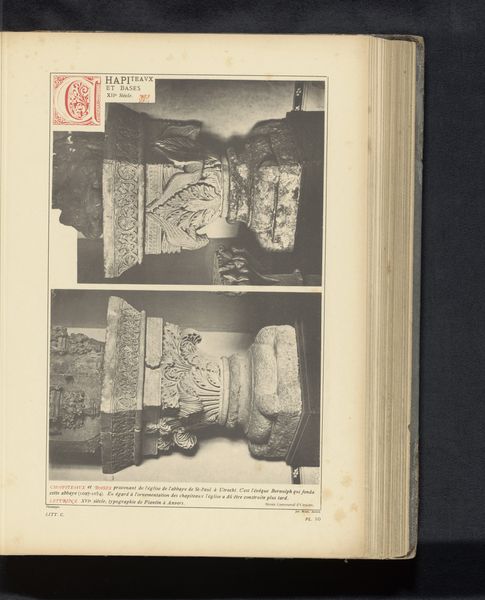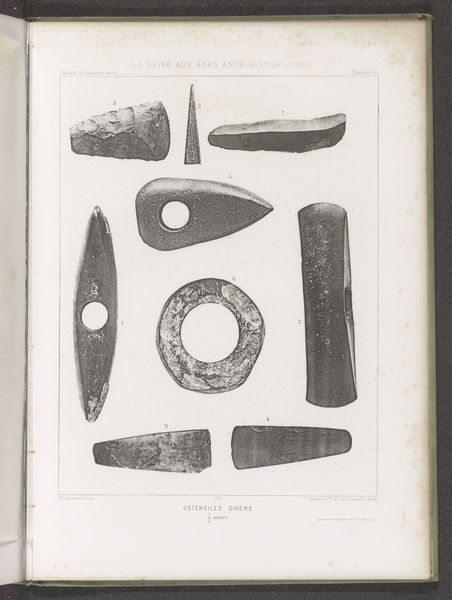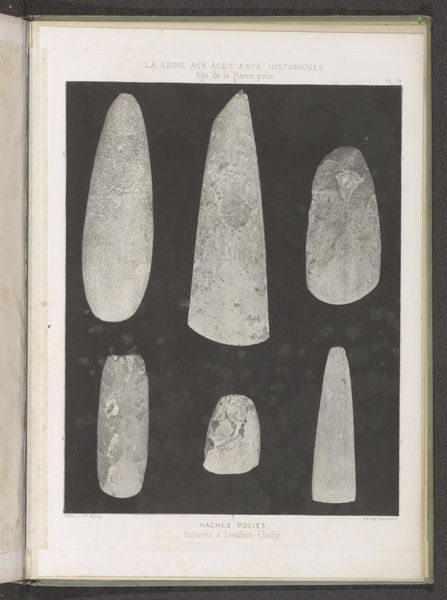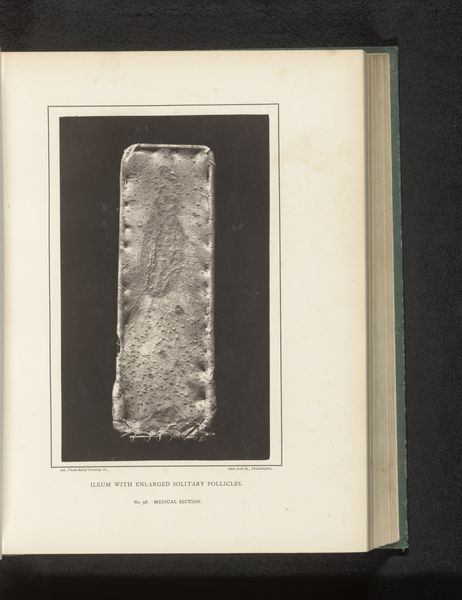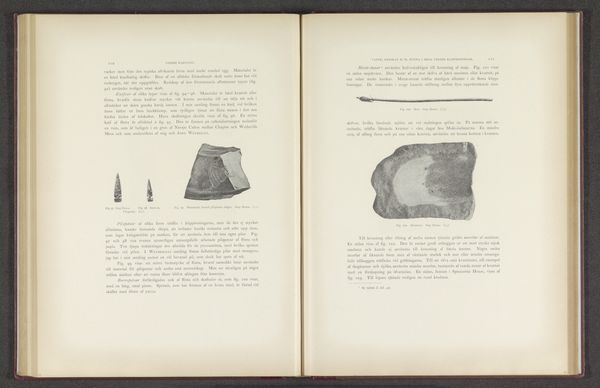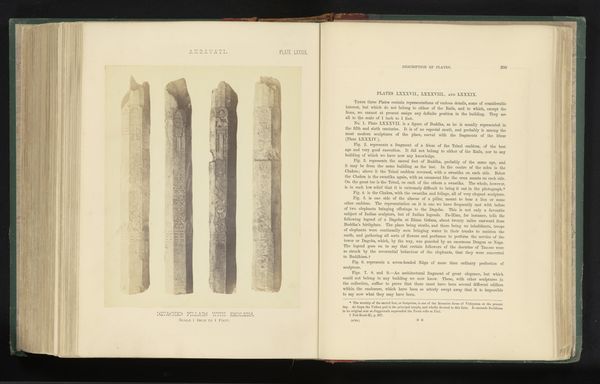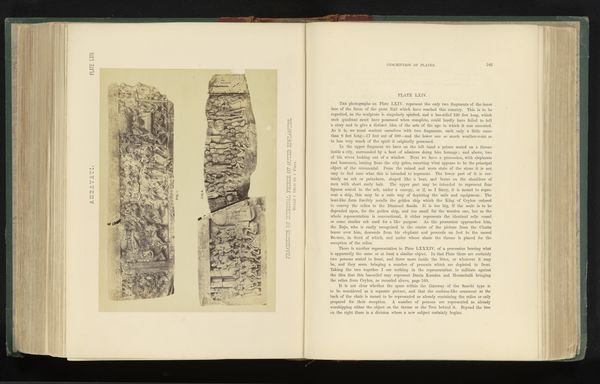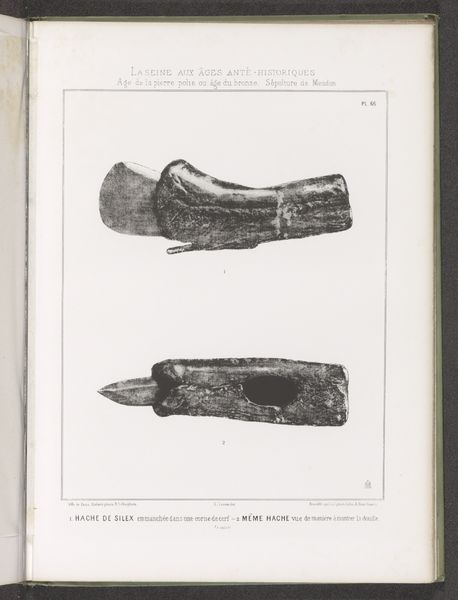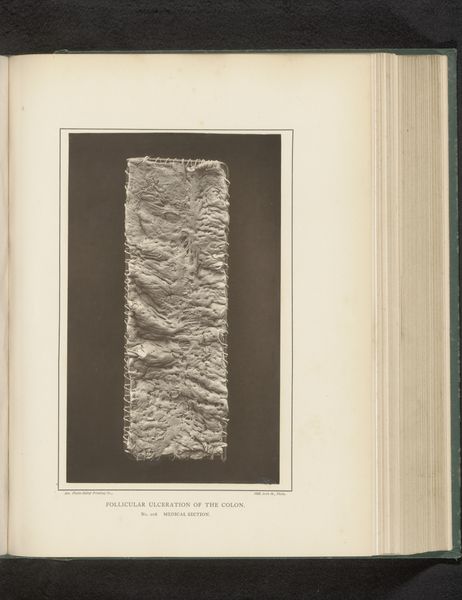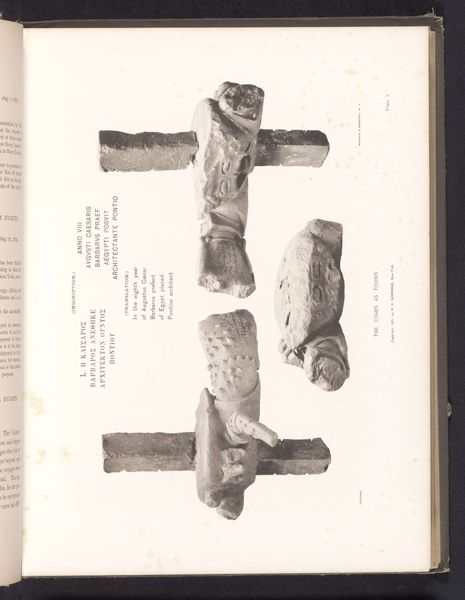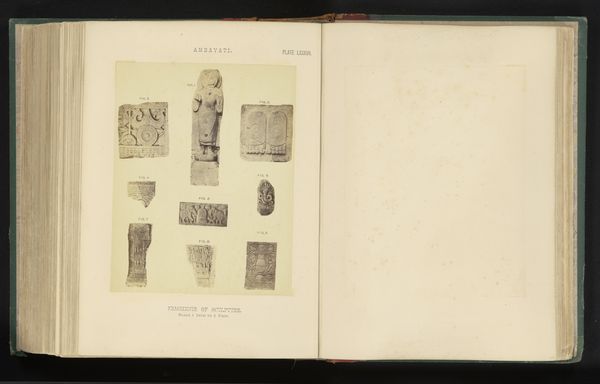
print, relief, architecture
# print
#
relief
#
ancient-egyptian-art
#
geometric
#
ancient-mediterranean
#
history-painting
#
architecture
Dimensions: height 272 mm, width 206 mm
Copyright: Rijks Museum: Open Domain
Curator: What immediately strikes you about this piece, its composition perhaps? Editor: We're looking at a print from 1881, depicting an antique model of the Temple of On, or Heliopolis. It looks like a relief. I am struck by how the geometric forms interplay to create something that is both representative and abstract. What elements stand out to you? Curator: Consider the print's rendering of the Temple model: The precise lines, the careful articulation of each plane, these formal choices reveal a commitment to clarity and order. It invites contemplation of structure, would you agree? How do the shadows shape the different forms? Editor: Absolutely, the strong shadows emphasize the depth and complexity of the structure, although the damage to the artifact introduces disorder into the system, creating contrast. Curator: Indeed, even in its fragmented state, the architectural form adheres to underlying geometric principles. The relationships between the various components — the base, the columns, the relief carvings— all seem deliberately calibrated. Observe how your eye traces from bottom to top of the print; do the various models contribute to this feeling? Editor: Yes, they do. Presenting multiple angles is really helpful. I hadn't considered how carefully balanced it all feels despite the age and evident wear. I initially saw it as ruined, but now I notice a different perspective and visual intent. Curator: Precisely! We move beyond ruin to appreciation for the structural intent and balance inherent in the model’s design, immortalized through precise, formal representation. Editor: Thanks so much, I’m taking new insights from ancient ruins, to better understanding their visual story!
Comments
No comments
Be the first to comment and join the conversation on the ultimate creative platform.
